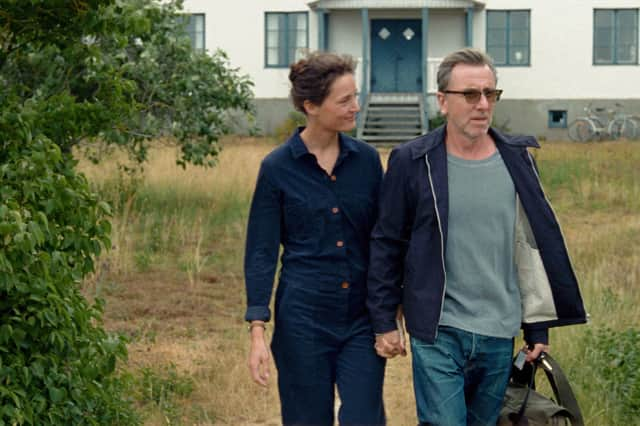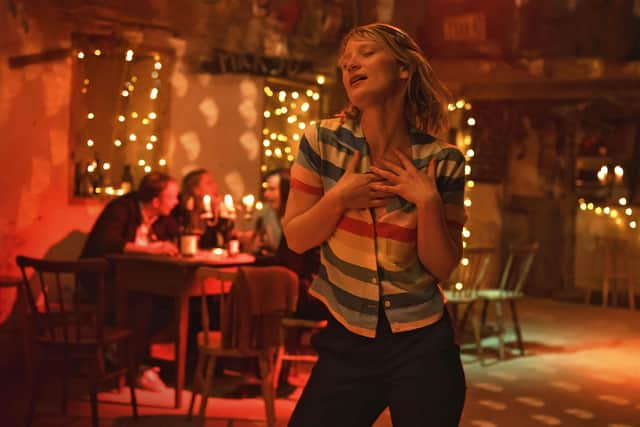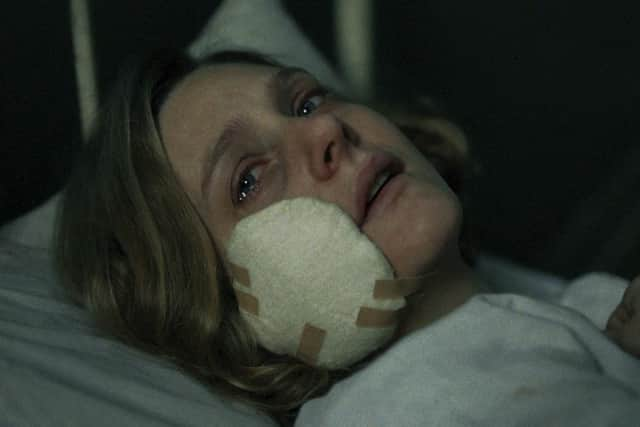Film reviews: Bergman Island | Earwig


Bergman Island (15) ****
Earwig (15) ****
Blurring the line between fiction and autobiography, Mia Hansen-Løve ’s new film Bergman Island sees the French auteur grapple with the creative process in playfully personal ways. A film about filmmaking that wears it Ingmar Bergman allusions explicitly enough to function as its own primer on the Swedish master, it follows filmmaking couple Chris (Vicky Kreips) and Tony (Tim Roth) as they descend upon Fårö, the titular Swedish island where Bergman lived and worked. It’s a locale that has, posthumously, become a sort of theme park for cinephiles and Chris and Tony arrive to participate in a summer residency programme that will allow them to work on their respective new projects while soaking up the all the Bergman inspiration they can. Somewhat ominously, though, their accommodation is also where Bergman shot Scenes from a Marriage, “the movie that made millions of people divorce”, as their cheerful guide jokingly puts it – a comment Hansen-Løve uses to seed the idea that Chris and Tony’s seemingly idyllic relationship might be nearing an impasse.


The first half of the film teases out this imperceptible-at-first rift, zeroing in on all the micro ways it’s covered up with jokes or glib comments or the kind of gentle affection that replaces genuine passion in relationships that end up being held together by children. We realise early on that Tony and Chris have a daughter together. She's staying with her grandparents and her absence makes it hard for them to ignore the power imbalance in their relationship. Tony, who’s older, is more famous and successful and the ease with which he’s able to work seems to reinforce Chris’s insecurities about her talents. It doesn’t help that when she confesses how torturous she finds writing he tells her “it doesn’t have to be” and later advises her to “do something else” if it doesn’t make her happy. Although this is meant kindly – and Roth’s amiable performance avoids Tony becoming another on-the-nose portrait of toxic masculinity – it doesn’t really help. Later, convivial discussions about the prolific Bergman having nine children with six different women hints at an underlying resentment Chris feels about the space male artists routinely have to create substantial bodies of work: historically they haven’t been expected to raise the children they sire or tend to the relationships they crave, so of course they can do more.
Advertisement
Hide AdAlthough it’s tempting to draw parallels here with Hansen-Løve ’s own life – she was in a relationship with Personal Shopper director Oliver Assayas for many years and has child with him – the film is more of a personal exploration of her own creative process. Since the start of her career she’s never been shy about refracting her own experiences through her art (see Goodbye First Love or Eden), but in Bergman Island’s second half she takes a slyer, meta approach by dramatising what we know of Chris and Tony’s relationship as a film-within-a-film, one revolving around a director (played by Mia Wasikowski) reconnecting with her old boyfriend (Worst Person in the World’s Anders Danielsen Lie) as they attend the wedding of mutual friends on Fårö. Hansen-Løve presents this as the script idea Chris is working on and, as she tells it to Tony, it plays out in the same elegantly simple, naturalistic style that she uses for Chris and Tony’s story, a creative choice that subtly reflects how naturally one reality flows into another. It’s an intriguing approach, not least because the contours of what’s “real” and what’s “fiction” become more ambiguous as the film progresses, something aided by Krieps’s wonderful, inscrutable performance and the sly way Hansen-Løve asks us to question the difference between authenticity and truthfulness in art.
If ambiguity courses through Bergman Island, its mysteries are practically spelled-out in 72-point bold when compared to Earwig, the latest from another singular French auteur, Lucile Hadzihalilovic. Like Hadzihalilovic's previous film, 2016’s Évolution, it’s an abstract horror film that resists easy interpretation, operating as it does on the strength of its beautifully wrought images and a kind of hallucinatory dream logic that seems to collapse time as events double back on themselves and we oscillate between the points of view of two characters yoked together by a violent event.
The first is Albert (Paul Hilton), a war veteran living in an amber-hued vision of post-war Europe where he attends to Mia (Romane Hemelaers), a little girl whose mouth is fitted with a retainer holding in place a set of frozen dentures made from her own drool. The second is a barmaid called Celeste (Romola Garai) whose intervention in an altercation between Albert and a mysterious stranger from his past leaves her horribly scarred and somehow psychically connected to him in ways that are difficult to parse but involve a painting of a creepy orphanage that has figured prominently in both their lives.


As expressionistic images blend both storylines together, meaning may remain tantalisingly out of reach (the film is based on an experimental novel by the British sculptor Brian Catling and by all accounts is even more abstruse as a film), but there’s something horribly compelling too about Hadzihalilovic’s quietly apocalyptic invocation of the past. David Lynch and Nicolas Roeg are obvious points of reference, not as inspiration – although you could draw surface comparisons with Lynch’s Eraserhead and Lost Highway, and Roeg's Don’t Look Know – but more in the film’s commitment to marching to the beat of its own drum.
Bergman Island is on select release; Earwig is on select release from 10 June